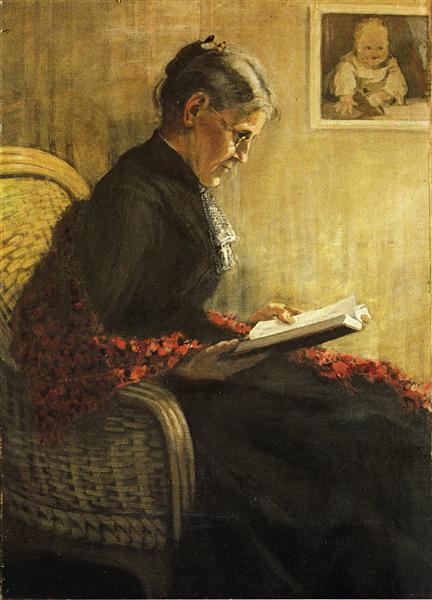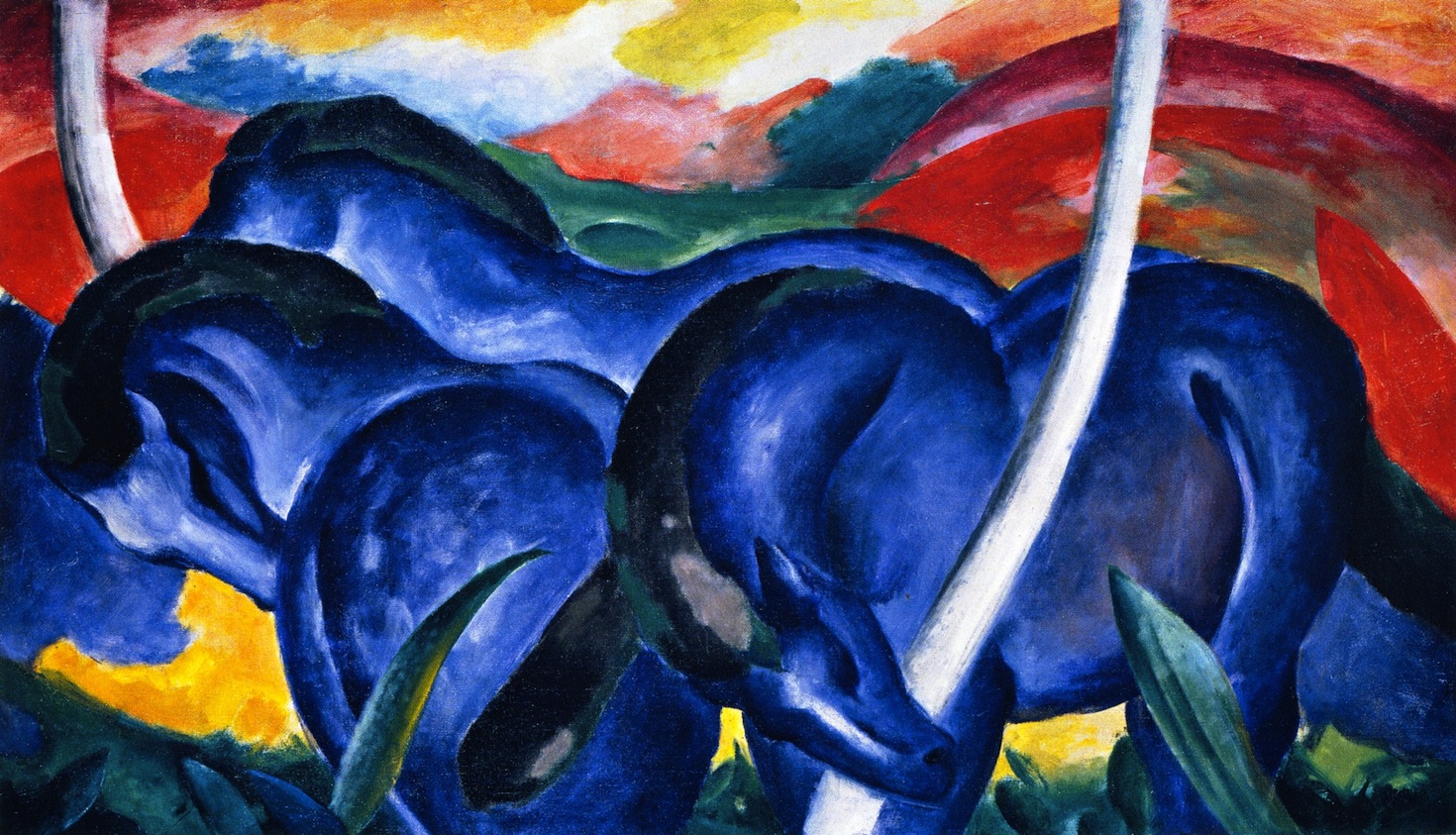What is Expressionism?
Expressionism began around 1905 in Germany and Austria. Recognizable by its bright, artificial color palettes and simplified forms, it introduced distortions of reality designed to elicit an emotional reaction from the viewer while simultaneously taking inspiration from and rejecting art movements of the past.
German Expressionism was a response to two things. First, there was the prevalence of Impressionism. While the style was modern, it was still representational in both the color palette used and the subjects rendered. Expressionism thus became a sort of Anti-Impressionism in that it placed substance over style.
Second, the rapid urbanization occurring around the world coupled with a series of international events that lead to Word War I added an undertone of anxiety and looming danger. It became more apparent as the outbreak of war approached and the world anticipated the impact of global conflict.
Over time many Expressionist artists incorporated other styles into their work. They experimented with Cubism, Dadaism, and more as Expressionism was more about evoking a raw emotion than anything else.
Franz Marc’s Early Life
Franz Marc was born in Munich on February 8, 1880. His father was an amateur landscape painter. Although he received instruction from him, Marc didn’t pursue art as a career until after completing military service. He enrolled in the Munich Academy of Art in 1900, but the focus placed on natural realism there didn’t suit him.

Portrait of the Artists’ Mother, Franz Marc, 1902
In 1903, he studied in Paris for six months, returning in 1907 to see the art of one of his favorite contemporaries, Vincent Van Gogh. He made several trips to Paris during those years where he took inspiration from some of the biggest artists of the time. He also gained an appreciation for Matisse while he lived in Munich.
Marc loved nature. He suffered greatly from depression and nature had a calming effect for him. When he lived in Berlin he studied animal anatomy extensively and made money by offering anatomy lessons to other artists. It is said that he “spent countless hours studying and sketching animals from every conceivable angle.”
In 1910 Marc had his first solo show in Munich. That same year he met August Macke and Wassily Kandinsky and they formed the group known as Der Blaue Reiter (The Blue Rider).

Large Blue Horses, Franz Marc, 1911
Der Blaue Reiter
When Franz Marc, Wassily Kandinsky, and August Macke formed Der Blaue Reiter, they were “united by an interest in exploring spirituality and a belief that art is more than meets the eye.” Individual colors had meaning and forms were simplified. Most importantly, the group shared a common philosophy that artists should be free to express their ideas as they saw fit.
Indeed they had a lot to contend with as global events escalated. It contributed to their apocalyptic view of “the toxic state of the world.” Marc himself believed that war would bring about a cleansing of the natural world.
Style and Subject Matter
Influence of Other Styles
Early on Franz Marc experimented with Naturalism and Realism due to his academic background. But in order to break free of the confines of realism, he also played with styles such as Impressionism, Pointillism, Fauvism, and Cubism. It was Fauvism that perhaps had the greatest influence in those early years as he combined the “intense, symbolic color palette of the Fauves” with his interest in anatomy.

The Red Horses, Franz Marc, 1911
Color Theory
As Marc’s palette became more intense, he developed his own color theory that added meaning to his work. Blue was a masculine color, “astringent and spiritual.” Yellow was a feminine color, “gentle, happy, and sensual.” Red represented the physical world, which was at times violent and dangerous. Marc said himself, “Red is matter, brutal and heavy and always the color to be opposed and overcome by the other two.”
Animals
Complementing Marc’s color theory was the way he perceived and represented animals. He considered them the ideal subject – “pure, truthful, and beautiful” – unlike people that rarely featured in his work. To him, animals represented what the modern world was missing and “animals in a landscape were… a bridge between man and nature.” They were spiritual, innocent creatures that brought him a sense of peace.

Tiger, Franz Marc, 1912
Late Work
In 1912 Franz Marc met Cubist artist Robert Delaunay, whose work greatly influenced his. It was around this time that Marc’s work took on a more Cubist flavor, evident in paintings such as Tiger. Marc’s work also became darker and more apocalyptic and his view on animals changed. These once pure creatures in his eyes were now “as impure as human beings.” By the time World War I broke out in 1914, his work became completely abstract, thus completing his transition away from realistic representation.

The Tower of Blue Horses, Franz Marc, 1913

Fate of the Animals, Franz Marc, 1913
World War I
Marc immediately enlisted in the German army when WWI broke out in 1914. The German government attempted to remove notable artists from combat, but for Marc they were too late. He died in the Battle of Verdun from shell splinter to the head in 1916.
During World War II, Hitler classified Marc’s work as “degenerate” and attempted to censor it. Most of his work survived the war and can be enjoyed in museums around the world.
Sources
https://mymodernmet.com/what-is-expressionism/
https://www.dailyartmagazine.com/franz-marc-horses/
https://www.theartstory.org/artist/marc-franz/life-and-legacy/#biography_header